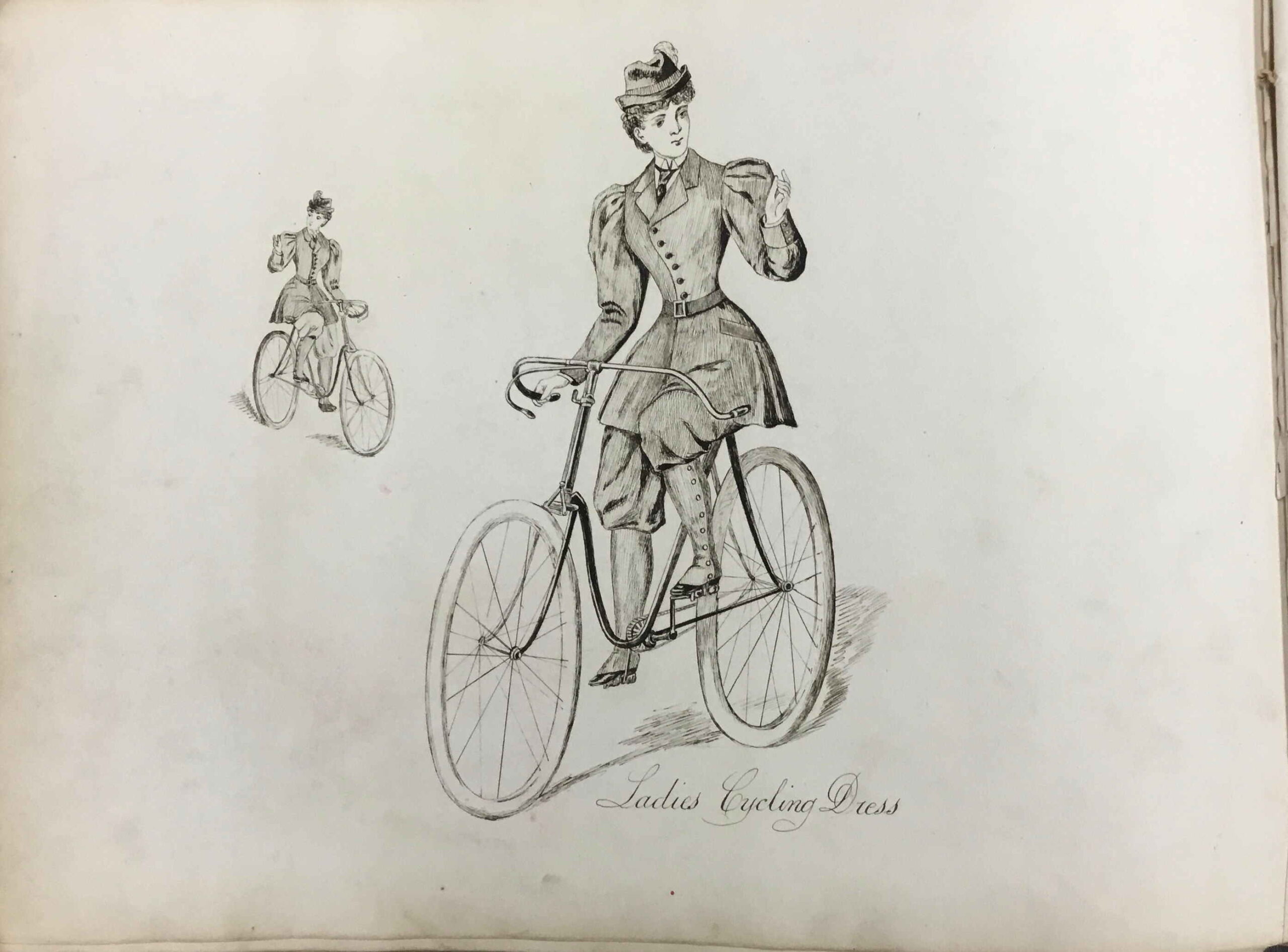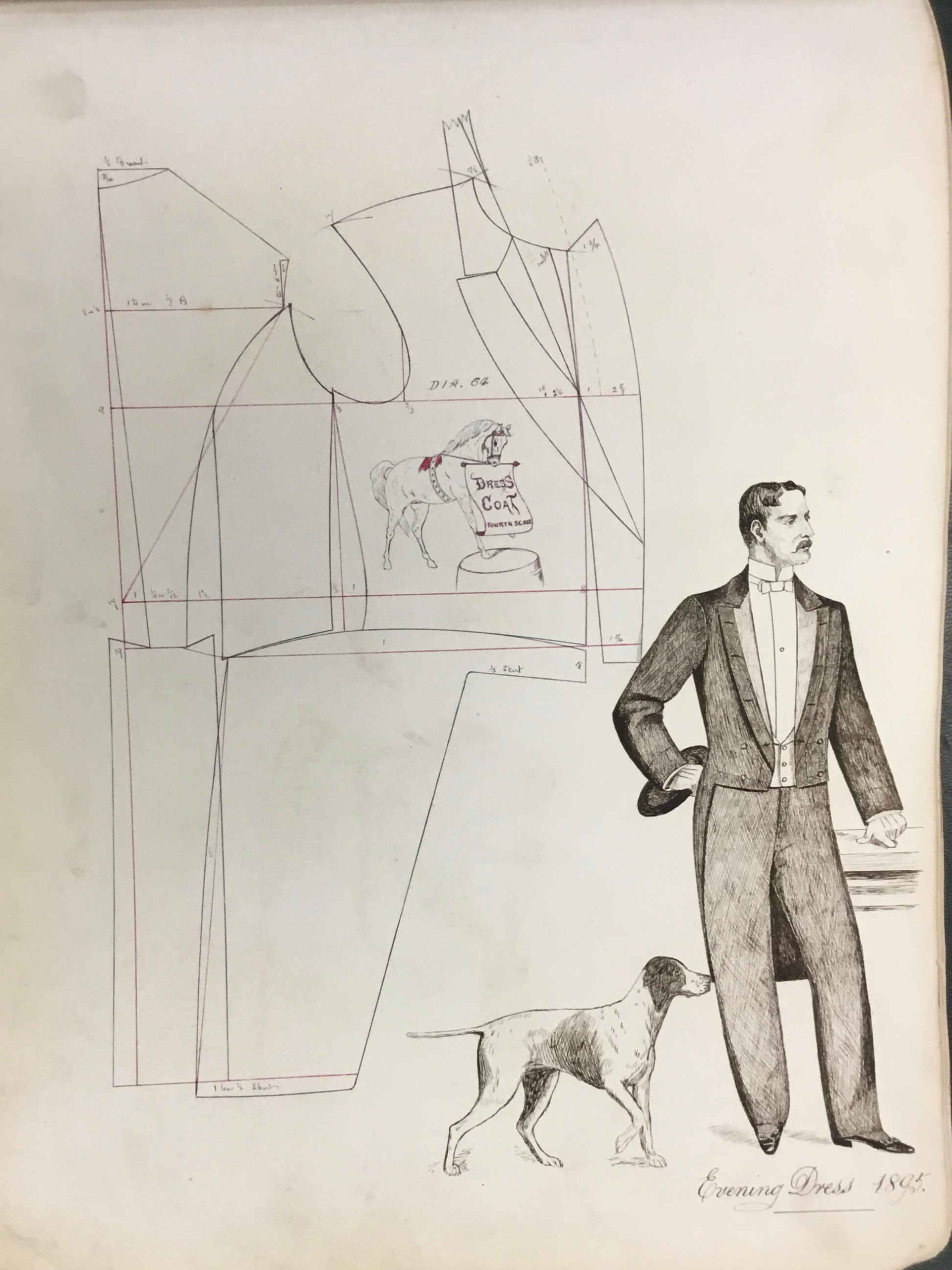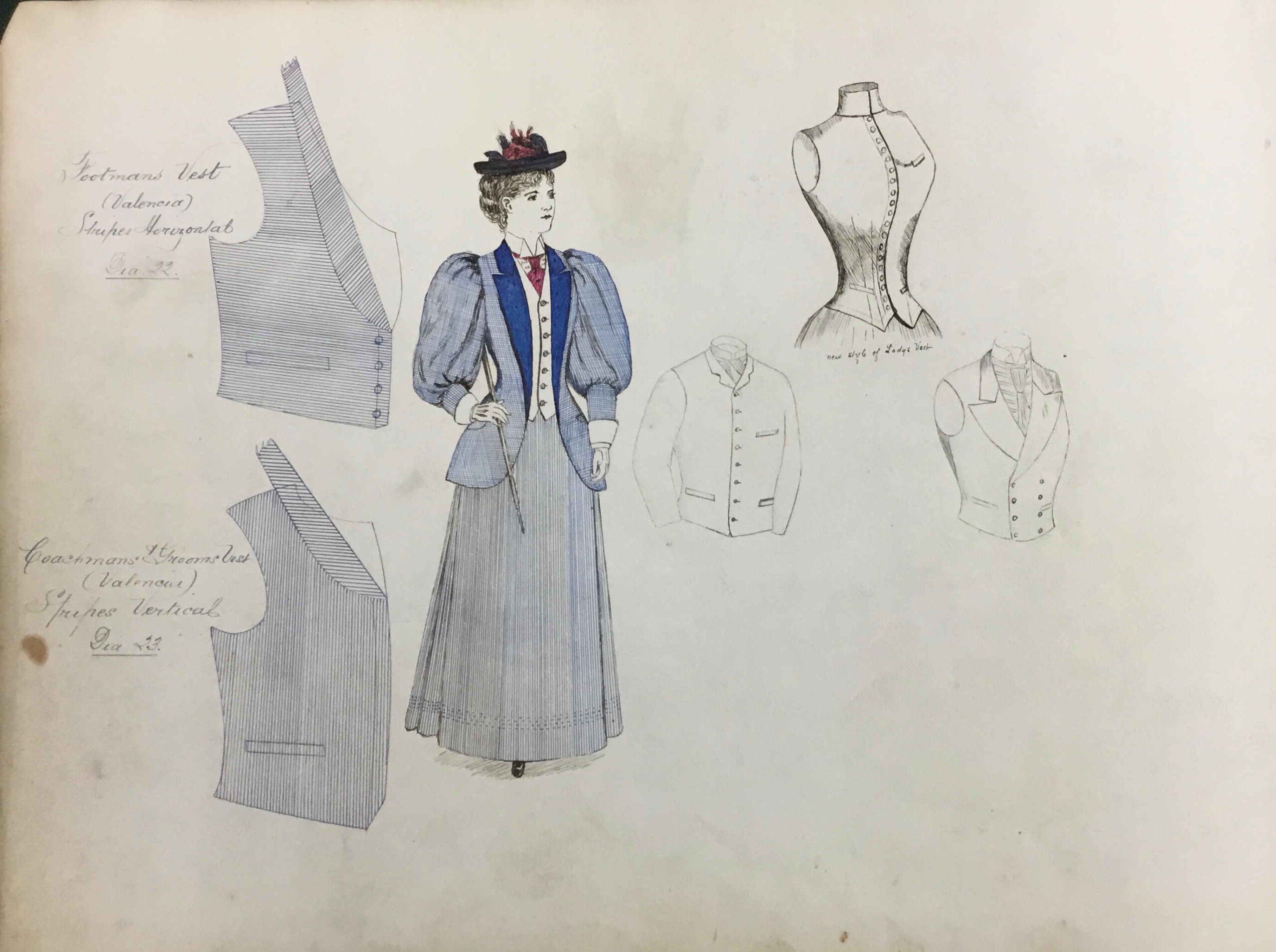19th-century tailor’s sketch book looks stylish buy
What the best-dressed men were wearing in the summer of 1895 has been revealed by the discovery of a tailor’s pattern and sketch book created 129 years ago.
Sergeant Master Tailor Henry Meacham of the 2nd Norfolk Regiment put his skills to good use to ensure military uniforms were up to the standard of the era. But his design album also revealed menswear for ‘Summer 1895’ and fashion for women.

One sketch shows three men in impeccable tailored suits with top hat or bowlers. Another shows a woman’s outfit with clinched in waist, ‘lady’s vest’ or waistcoat and neat jacket with voluminous sleeves.
The unique album, found by Hansons Auctioneers, will go under the hammer on August 7, and it’s stunned militaria valuer Matt Crowson. He said: “It’s an amazing one-off find. It’s dated April 1895 and each page is meticulously hand–illustrated with patterns and measurements for British Army military attire including mounted infantry breeches, spats and vests. It also shows medal ribbons from Victorian military campaigns, designs for groom and coachman frock coats, infantry full dress sword and belt and many items of civilian clothing.
“The illustrations, many hand coloured, sweep back to a bygone age. Sketches include a Victorian lady on a bicycle, dogs, horses, birds, fish, regimental and flags. There is even a sketch of his tailor’s scissors.

“Information inside the album seems to confirm the clothing patterns in the book were ‘examined and found correct’ bi I.Hawkesford Inspector, and J.W.Pritchard, Superintending Foreman.
“It’s clear Sgt Meacham was not only a brilliant draughtsman but a talented illustrator as well. One sketch relates to London’s Pimlico Cutting Academy For Soldiers, which suggests he may have served there. It’s better known as the Royal Army Clothing Depot. Period records from his long army career and civilian life confirm he was a tailor, both before and after his military service.”
Henry William Meacham, was born on April 7, 1860, in Beccles, Suffolk. He enlisted at Great Yarmouth in the Norfolk Regiment on July 18, 1883, aged 23 (service number 564). His civilian occupation was noted as ‘tailor’. His service record states he served at home from July 1883 though to December 1901. This included service in Ireland, stationed at Cork.

By March 1897, Henry had transferred to the Kings Royal Rifle Corps. He served in South Africa during the Boer War from December 1901 to June 1904, earning the Queen’s South Africa Medal with clasps for Orange Free State and South Africa 1902. He also earned a Long Service and Good Conduct Medal. His rank was noted as Sergeant Master Tailor.
Henry was discharged from service on October 2, 1905 but at the outbreak of the First World War in 1914 he re–engaged for the duration of the war. It’s believed he served with the Queen’s Royal West Surrey Regiment during WW1. He was discharged just before the cessation of hostilities in November 1918, by which time he was in his late 50s.

He was discharged from service under paragraph 392 Kings Regulations, meaning he was no longer physically fit for military service. As testament to this, he was entitled to the Silver War Badge (badge number B67082), and this was awarded in 1920. Sgt Meacham was apparently not entitled to any WW1 service medals, with the SWB being his only award from this era. He passed away in Norfolk in 1938 aged 78.
Matt said: “To serve your country from your early 20s through to your 50s tells us much about Sgt Meacham’s character. The discovery of his pattern book also shows us another aspect of war, the involvement of master tailors in the creation of uniforms. It’s a fascinating history lesson and a glimpse of the way we were more than 100 years ago.”
The pattern book has an estimated of £1,500-2,000 in the auction house’s Medals and Militaria Auction in Derbyshire.


